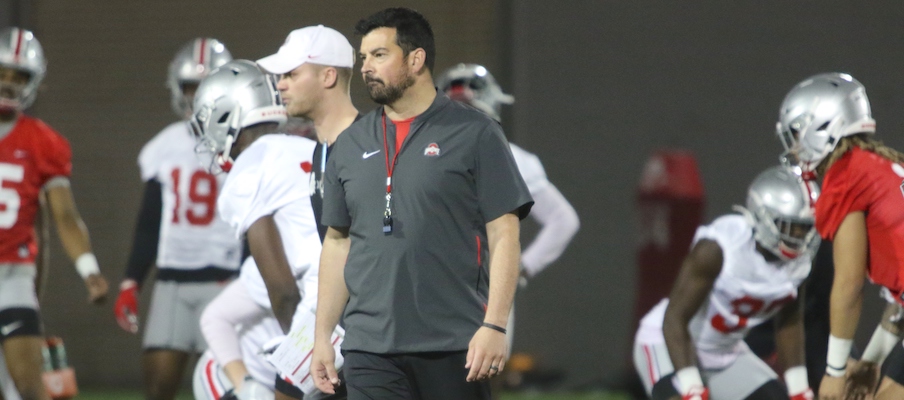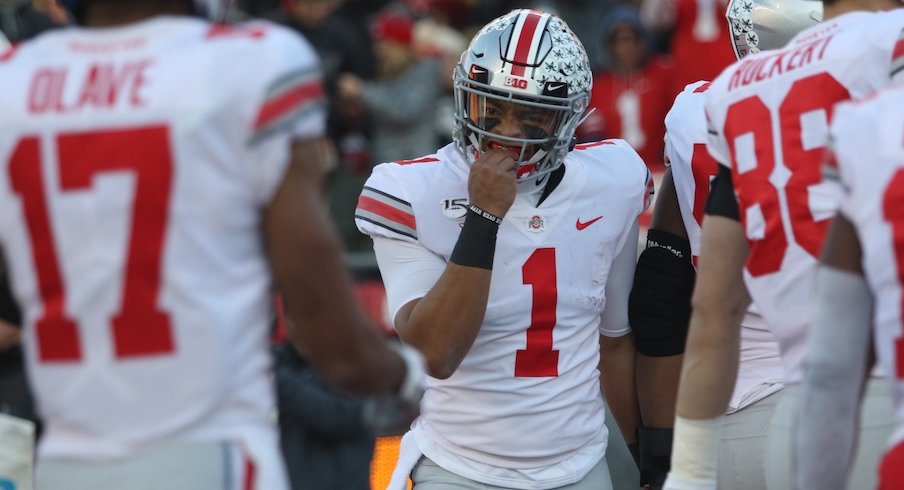Now’s not exactly the time to put any belief in the Big Ten acting with haste.
This is a league that spent five months strategizing for a 2020 football season by seemingly closing its eyes and crossing its fingers. When it finally released a fall schedule set to start on Sept. 3, it lasted a week before the member institutions’ 14 presidents and chancellors voted to postpone it to a later date, choosing to pursue a winter/spring model that, remarkably, they hadn’t spent any meetings discussing before deciding to take that route.
Admittedly, there’s not a lot to put trust in based on the past month’s events – along with the complete silence from the conference – and what happened in the preceding five months.
Yet if the Big Ten can put together something quickly, and if it wants to do so – which is perhaps the bigger, more unknown part of this equation – a season starting in October remains doable. There’s enough time to reverse course and, perhaps most importantly from Ohio State’s perspective, play enough football games to earn a College Football Playoff bid.
While it’s true that we’re nearly one month from the Big Ten’s official postponement of fall sports and three weeks from Kevin Warren doubling down by writing an open letter in which he said the postponement “will not be revisited,” recent reports have created at least a semblance of hope to those pining for football to start.
On Wednesday, ESPN’s Adam Rittenberg reported a late October start “isn't out of the question,” and the Chicago Tribune’s Teddy Greenstein reported the Big Ten’s vote about when to play its upcoming season will be this weekend “at the earliest” and could take place on Sunday or Monday.
No one should get their hopes up too high about the Big Ten playing football this fall with a playoff berth on the line. For weeks, reports of a late November start or a January kickoff have been floated out, and those still appear to be the most likely scenarios.
But if at least some momentum stemming from continued research of coronavirus spread and testing advancements has picked up, which Rittenberg’s report at least hints at, the Big Ten could still alter its path quickly enough to have its teams eligible to earn a spot in the playoff.
And, let’s be honest: That’s what this is all about, at least in Columbus where the team that has by far the most to lose without a fall season resides.
The potential of a playoff berth and a national title have spurred Randy Wade – the father of Shaun Wade – to organize protests at both the conference headquarters in Chicago and outside of Ohio Stadium. It’s led to Justin Fields, whose Ohio State career could end depending on when the season starts, creating a petition signed by 300,000 people. It’s one of the main reasons to fight so hard in the mind of Ryan Day, who said he believes he has a “once-in-a-lifetime” team. It had to have played a role in the decision to vote not to postpone by new president Kristina Johnson, who told the Columbus Dispatch, “I would love for us to compete for a national championship, in all the sports.”
They all collectively know what this football team – voted No. 2 in the preseason AP top-25 poll – can do if given the opportunity to compete this fall.

A few weeks ago, Nick Saban said he thinks a spring football season could look like a “JV season.” He is, undoubtedly, biased when considering his position as a head coach on a team set to kick its season off in September. But to many Buckeye fans who live and die based on their team’s push for a national title, he’s not completely wrong, either. And in the minds of players like Fields and Wade, whose father told Fox News that the cornerback wouldn’t play if the season begins after October, it matters a great deal.
An October season – even one that starts on the last weekend of the month – could allow a Big Ten team to earn a spot in the four-team playoff pool.
A lot has to happen in a short amount of time for that to become a reality, including a revote by the presidents and chancellors to reverse the 11-3 decision they made a month ago.
But if the conference wants to make it work, allowing its teams to play with the playoff in the balance, it can happen. The window hasn’t closed yet.
Provided Greenstein’s report is correct and they vote either this weekend or early next week, Big Ten teams would presumably open preseason camp as soon as possible. They could start within the next one to three weeks, depending on when the conference can get it ramped up, and have a four-week camp leading up to the season.
Here’s what the slates could look like.
- Starting on Oct. 17: A 10-game season without any bye weeks that ends on Dec. 19, a nine-game season without any bye weeks that ends on Dec. 12 with a conference title game on Dec. 19, a nine-game season with one built-in bye week that ends on Dec. 19, or an eight-game season with one built-in bye week that ends on Dec. 12 with a conference title game on Dec. 19.
- Starting on Oct. 24: A nine-game season without any bye weeks that ends on Dec. 19, an eight-game season without any bye weeks that ends on Dec. 12 with a conference title game on Dec. 19, an eight-game season with one built-in bye week that ends on Dec. 19, or a seven-game season with one built-in bye week that ends on Dec. 12 with a conference title game on Dec. 19.
- Starting on Oct. 31: An eight-game season without any bye weeks that ends on Dec. 19, a seven-game season without any bye weeks that ends on Dec. 12 with a conference title game on Dec. 19, a seven-game season with one built-in bye week that ends on Dec. 19, or a six-game season with one built-in bye week that ends on Dec. 12 with a conference title game on Dec. 19.
None of these options are perfect, especially those without bye weeks built in to make up canceled or postponed games. But the College Football Playoff selection committee won’t make a decision on who gets the four bids until Dec. 20.
Of course, to overlook all of the challenges to get to the point where football actually gets played in October would be foolish.
Primarily, at least six of the 11 presidents and chancellors who voted to postpone the season would need to agree to an October start date, and almost none of them are at schools that have teams vying for a spot in the playoff, so that’s an argument that would ring hollow to most of them. The Big Ten would also have to figure out testing and contact tracing protocols, which weren’t set by the time it released the conference-only schedule in August. The buffer the SEC, Big 12 and ACC have of bye weeks in which to make up games wouldn’t exist for the Big Ten, either, which could complicate playing an abbreviated schedule in a tight window.
To further complicate matters, several Big Ten football programs are currently dealing with coronavirus-related issues. Wisconsin announced Wednesday night it's pausing workouts for two weeks. Maryland halted workouts last week due to a spike in positive cases. Iowa temporarily stopped workouts last week before starting them back up on Tuesday. Penn State on Wednesday put a hold on some teams' workouts, though 247Sports reported that doesn't include the football team.
To think deciding, at this point, to get teams on fields this fall will be easy would be a misnomer. But if this is a road the Big Ten is serious about going down, it still can get its football teams to play meaningful football by starting the season before the end of October.
The conference would just have to act quickly to make it happen. The clock’s been ticking, and it’ll soon run out of time.


